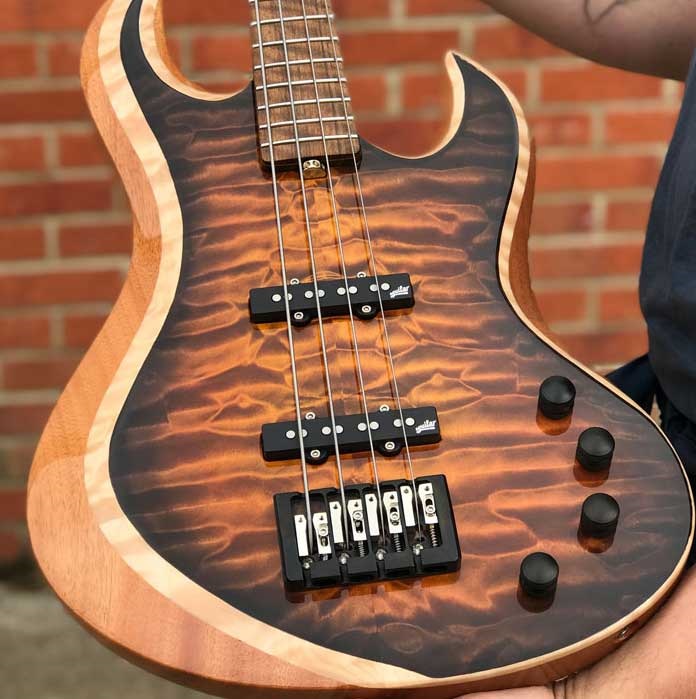To start off, we’re not saying that the future of bass guitar building is going to be 3D-printed. Not at all. 3D printing is still a relatively young technology, and to the best of our knowledge, all 3D printed guitars still use wooden necks (including the one shown here) simply because it’s still the most practical thing to use.
In the video below, only the body is 3D printed. Everything else uses traditional bass parts and components. The pickups used are Seymour Duncan Quarter Pound Jazz pickups.
What’s really interesting about this build is that the builder goes into good detail describing exactly how the body was made, from software to material to printing process.
Also, yes there is a sound demonstration of the instrument at the 3:10 mark.
What can you learn from seeing a 3D-printed bass?
It’s simply another build option, and if you opt to use it, the best use is for some of a bass build but certainly not all of it.
Check out the video below and post a comment with your opinion on it.




I’m interested in how much that bass weighs.
I`d like to play it for myself
you will never get the sound characteristics of wood
Awesome! Good job….
Personally, I thought it sounded Bloody fantastic. In it’s own right ,it is a lovely sounding Bass. More than acceptable.
Fantastic Job!! simply awesome.
you should get a triple A for that!!
Interesting I like the body shape. I want to try it.
I’d LOVE to try one…. I’m looking for a very light bass with a thin neck, this could get me halfway depending on the materials used to build the body of the bass.
Very cool, and you did a great presentation – nice job!
An advantage of 3D printing is that you can do things with the internal structure of a shape that’s impossible to mold or carve, e.g. you could make it a honeycomb structure; put resonant cavities of different sizes in different places; do a CAD stress anlaysis and use that to just put reinforcing where it’s needed… there’s great potential for a superlight but solid and resonant bass.
Thanks for the kind words everyone! To answer the question of weight – it is 10 lbs.
Very nice. Great to see innovation like this. Many would scoff at this idea, but people scoffed at the first solid body bass also.
Sounds good to me, and good work on your part!
good work and nice playing
The build seems another typical budget work that didn’t involve sound quality research (I understand this is just an out-of-interest impulsive build).
Sounds astonishingly decent. There is an unevenness between the strings, but many a passive bass have that too.
I’ll plus this.
Magnifique! C’est toujours bien de voir de nouvelles applications à de jeunes technologies. Et joli échantillon musical aussi. Well Done!
Excellent! You’ve made a beautiful instrument that has its own unique tone. While it may not be ideal for duplicating existing music, the same thing could have been said about Chris Squire’s tone before he came up with it. A unique sound will find its own place and that’s what creativity is all about.
The presentation was also very good and the appearance of the instrument is gorgeous.
The only thing that puzzles me is why they call it a printed process. I was picturing layers of ink on a substrate when I first read this. It looks like plastic that has been formed in some way – perhaps by a CNC cutter (??) Is that how it’s made?
Regardless of the name, you’ve done a great job!!
3D printing is a type of additive manufacturing – a process of depositing material (in this case plastic) layer by layer until a 3D object is produced. Look up 3D printing on youtube to get an idea of how it’s formed. No cutting done here!
Great demo. I wish all the builds here could have either videos or slideshows of the process. Thanks!
I would be interested in how it would holdup over time (plastic gets brittle over time). Also if the wood inlay glue bond will holdup as well. All in all grest looking and sounding bass, now if he could just print me a 58 pbass that would be awesome